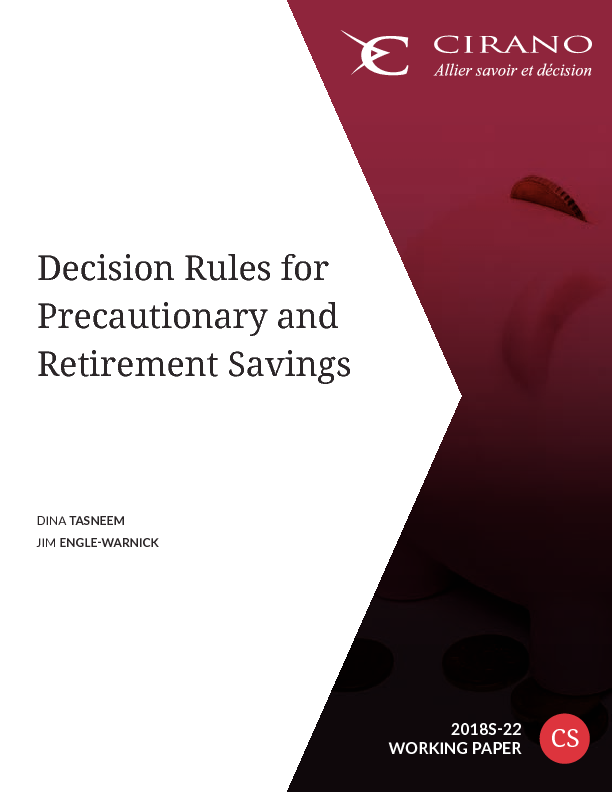Decision Rules for Precautionary and Retirement Savings
We report results from an experiment that compares precautionary savings behavior with retirement savings behavior. We find that more than 30% of precautionary savings behavior can be categorized as optimal or near optimal, while virtually all of this behavior disappears in favor of simple decision rules that specify constant consumption in each period when retirement savings is added as a motive. We discuss the the costs and benefits of these rules, which make a complex decision-making environment manageable. Our experiment is the first to identify how decision-making changes when agents are required to save for retirement.




